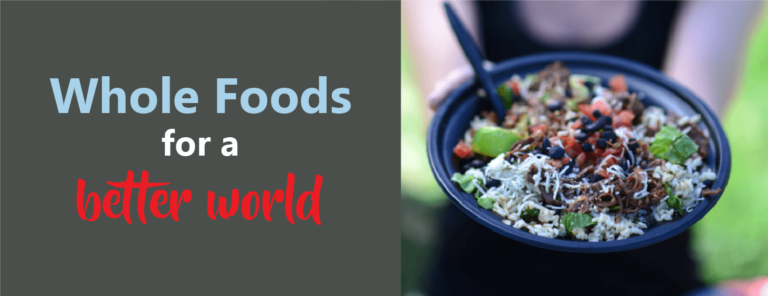Last time we chatted, I had discovered the difference between processed food used in restaurants versus whole, real food ingredients. I felt better knowing that I was feeding my family real, whole foods when they ordered burritos and bowls from Ori’Zaba’s.
My guess was that if whole foods were better for my health, then they also must be better for the planet. My quest now was to discover how whole food restaurants benefit the planet. Good old Google did not lead me astray in my search. Lots of research appeared showing how whole foods are better for the planet in a myriad of ways.
Eating Less Processed Foods Benefits the Environment
Research is backing up the idea that eating less processed foods is better for the environment. Whole grains, vegetables, beans and legumes all fall into the whole foods category. Researchers have concluded that transitioning diets toward greater consumption of healthier foods would also improve environmental sustainability. Better for my waistline and the planet seems like a no-brainer win for me and my family.
When a restaurant mainly uses whole foods which means no processed foods, it benefits the environment and their local community.
- No freezers = less energy use, reducing carbon footprint
- Purchasing whole fruits and veggies instead of canned = less trash, less plastic packaging waste
We all know that processed foods are bad for our health, but did you know that they aren’t good for the climate’s health either?
Processed Foods and Energy
In the U.S. the amount of energy that is required to produce processed food has dramatically increased because of the packaging and processing. The amount of energy required to produce food has dramatically increased because of food processing and packaging.
Overly processed foods typically happen in large, energy-intensive factories where food goes through many steps such as mixing, baking, cooking, freezing and is otherwise manipulated into a shape and size that does not resemble the original item.
Cereal is a good example. Most of the time it starts as wheat, corn or oats and ends up as some type of dried, processed, crunchy shape that looks nothing like oats, corn, or wheat.
It’s estimated that upwards of 75% of processed foods contain genetically engineered ingredients like corn, soy, canola, cottonseed oil and sugar, which rely upon fossil-fuel intensive chemical pesticides and fertilizers to produce. When we choose whole foods, we are helping reduce the reliance on fossil-fuel intensive growing and production processes. We are environment warriors, helping to protect our planet and communities!
Choosing a restaurant that uses whole foods benefits your belly and the planet. From less packaging to a lower carbon footprint, restaurants that focus on real food instead of processed food are helping fight climate change and bringing healthier alternatives to your community. Source: https://www.centerforfoodsafety.org/issues/305/food-and-climate/1-eat-fresh-unprocessed-foods
Speaking of healthy alternatives, our next blog will look at how plant-based meals help the planet and you!
